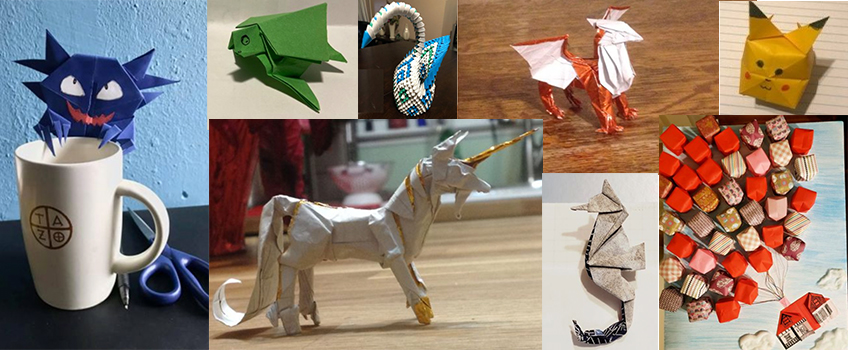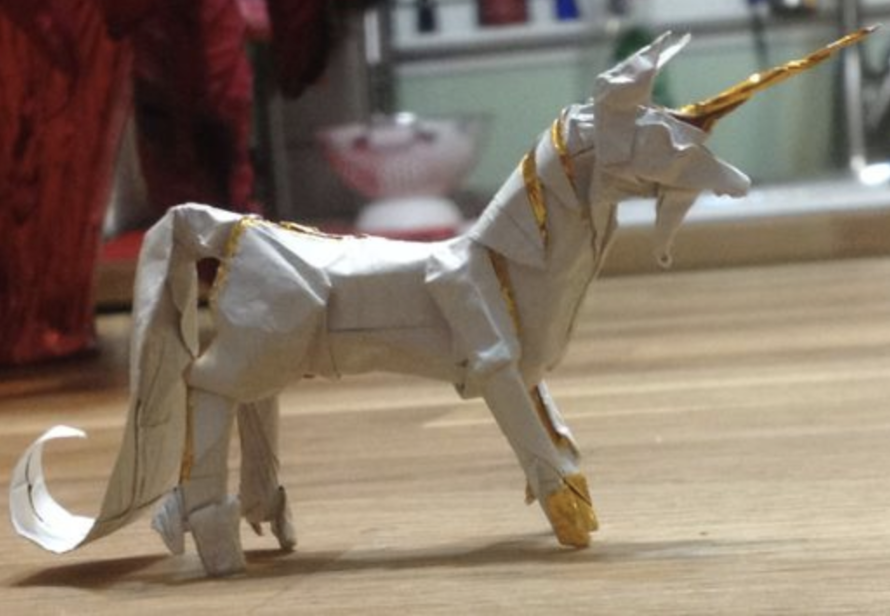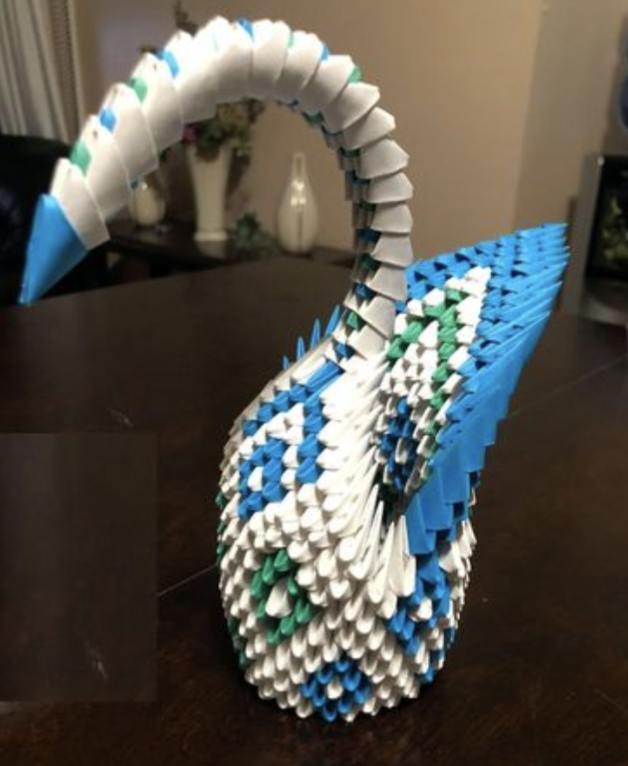Students Get Crafty While Unfolding Math Concepts

Galloway, N.J. - Every spring, students in Norma Boakes’s general studies class “The Art and Math of Origami” get crafty while unfolding math concepts, and the much-anticipated results are displayed at the Origami Showcase.
This year, the showcase tradition continues in a virtual format. Brighten your day by browsing the color-themed origami models online.
Boakes, an associate professor of Education who also has a mathematics background, uses the hands-on art of origami to help her students visualize abstract math. The students in her class come from many different majors, and their origami models reflect their diverse talents and interests.
T he students created group displays around a common color and planned their own five-piece personal series with models that illustrate a math concept, use a unique material, offer a challenge, appeal to their interests and allow them to instruct others.
he students created group displays around a common color and planned their own five-piece personal series with models that illustrate a math concept, use a unique material, offer a challenge, appeal to their interests and allow them to instruct others.
For her model of choice, Amira Lee decided to have some fun making paper airplanes with her nephew. “We are limited to what we can do for fun during this time,” Lee explained, so she and her nephew had a contest to see whose model would fly farther.
For her instructional model, Lee crafted homemade envelopes out of wrapping paper because they can come in handy during the pandemic.
Students searched their homes for unique materials and came up with sticky notes, candy wrappers, aluminum foil, baking paper, grocery store advertisements, money, a coloring book sheet and tissue paper. A couple of students even spared toilet paper. One noted that a sturdier material would be easier to work with, and another made a succulent plant to adorn the roll.
While studying origami, the students also get to explore other cultures. Brenda Cuba-Barreda
used a patterned washi paper, which is produced in Japan out of agricultural remnants. Wa shi translates to Japanese paper, and some cities are sustained by the production of this paper, she explained. 
Animals were popular subjects. Emily Hall made a llama for her challenge model because they “represent strength and the will to push on.”
Cuba-Barreda folded a koi fish with a fanned-out tail to give a flowy effect. “Koi fish in Japan are good fortune and a sign of perseverance in adversity,” she explained.
She also made a sea turtle inspired by her Marine Biology field experience in Florida where she studied endangered sea turtles.
Catherine Sundholm is studying medicine, so she chose a horseshoe crab because their blood has a unique compound used in the medical field to detect contamination.
The math models illustrate a variety of symmetries and will take you right back to geometry class. Gabrielle Lashley’s Kakuna the Poke’mon character illustrates symmetry very well.
Not all origami creations are made from single sheets of paper. A swan by Carlo Blaquera used more than 550 simple modular pieces to make a masterpiece.
The artists would love your feedback, so feel free to send them a message here.
Reported by Susan Allen
Follow Gabrielle Lashley's instructional video and try your hand at a Totoro model.


